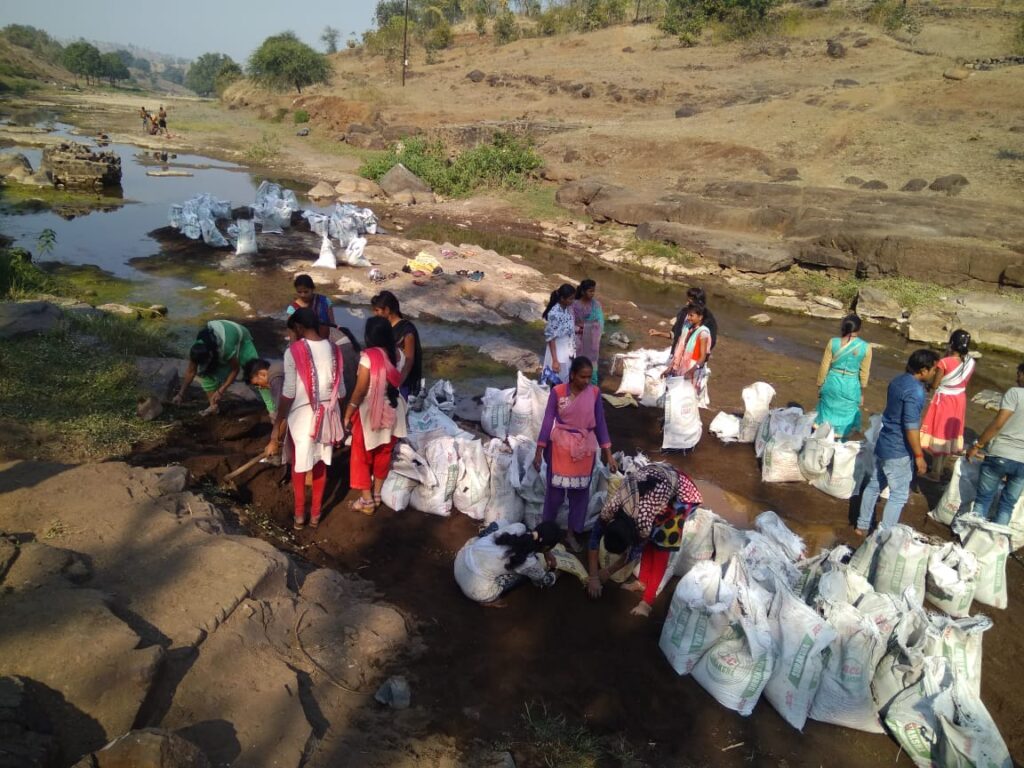Biodiversity Conservation At: College,Dhadgaon Ta :Akrani, Dist: Nandurbar.

Objectives
Aware the local people about the local cultivars of crop and importance of this diversity to preserve it
To maintain the crop biodiversity in the local area.
To document these traditional landraces with their importance.
Objectives:
- To make local people aware about the local cultivators of crop and importance of this diversity to preserve it.
- To maintain the crop biodiversity in the local area.
- To document these traditional landraces with their importance.
The Context:
Our area the Dhadgaon village is situated at the basement of Satpuda Hill range. Our area is rich in biodiversity of plants and animals. Owing to the fact that conservation of biological diversity leads to conservation of essential ecological diversity to preserve the continuity of food chains. There is necessity of preservation of genetic diversity of plants. It ensures the sustainable utilisation of life support systems in nearby area.
Practice:
- Involvement of College students in the landraces collection and exhibition.
- Documentation and presentation of landraces of crops.
- Promotion of local and organic farming wherever possible.
- Educate youth and local people about biodiversity of area.
- Participation of local farmers, and N.G.O. like BIAF, Jay Johar, Foundation Tinasmal along with the students for the sake of biodiversity conservation.
Actual Exhibition:
Shri. Vikram Kanhere (President Janarth Sanstha), Lilesh Chavan, observed the exhibition – collection & admired the collection efforts by the Dr. H. M. Patil, HOD, Botany Department of the college and students.
Dr. B. G. Pawar, Dr. S. R. Mahale, Prof. Anil Shinde, Prof. A. S. Rathod, Prof. Dr. Haribhau Pawar supported the exhibition. Students collected 123 samples of crop varieties and preserved their seeds as a part of conservation practice. Local biodiversity expert Shri. Nana Pawara also presented his seed diversity collection.
BAIF presented six seed banks, and Jay Johar foundation presented their samples. All the collected samples are presented in sheets, jars, bottles, polythene bags with proper naming and descriptors like local name, morphological characters, locality and utilization.
This practice is followed every year.
Evidence of success:
Food biodiversity is the diversity of plants used for food, both cultivated and from the wild. Using food biodiversity to diversify diets is a critical element in response to global malnutrition and towards sustainable food systems. The nutrient content between different species or varieties of the same species can vary a thousand-fold. This information can be used to maximize nutritional adequacy of diets. Improved access, availability, affordability and nutritional supplement to the tribal.
People of the area become aware about the richness of plants in the area and started protecting them.
Problem encountered & resources required:
Collection and distributions of crop landraces from different corners of the remote areas is the difficult task. But the students and local senior citizens have done it voluntarily.
Actual Exhibition
Shri ViKram Kanhere (President Janarth Sanstha.), Lilesh Chavan, observed the exhibition – collection & admired the collection efforts by the Prin Dr H. M. Patil, HOD, Botany Department of the college and students. Dr B G Pawar, Dr S R. Mahale , Prof Anil Shinde, Prof. A.S.Rathod,, Prof Dr Haribhau Pawar supported the exhibition. About 05 students collected 123 samples of crop varieties. Local Biodiversity expert Nana Pawara also presented his seed diversity collection. BAIF presented six seed banks, and Jay Johar foundation presented their samples. All the collected samples are presented in sheets, jars, bottles, polythene bags with proper naming and descriptors like local name, morphological characters, locality and utilization.
Evidence
Food biodiversity is the diversity of plants used for food, both cultivated and from the wild. Using food biodiversity to diversify diets is a critical element in response to global malnutrition and towards sustainable food systems. The nutrient content between different species or varieties of the same species can vary a thousand fold. This information can be used to maximize nutritional adequacy of diets. Improved access, availability, affordability and nutritional supplement to the tribal.
Problem encountered & resources required:
Collection and distributions of crop landraces from different corners of the remote areas is the difficult task. But the students and local senior citizens did it with their interest.
